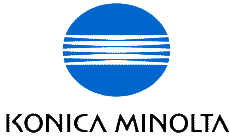

Japanese camera-maker Minolta began in 1928 in Osaka, then-named the Japan-Germany Camera Shop. Their first camera, the Vest, arrived a year later. They eventually changed the company name to Minolta.
Minoltas didn't really become popular in the US until the 60s, along with the wave of Japanese SLR cameras. While they led the industry with a lot of "firsts," Minolta never managed to market themselves with the top rank. At least in the US, Nikon and Canon both established stronger followings and carved out places in the professional market; Minolta was usually a serious-amateur camera. This continued through the 70s: Minolta made fine cameras and had more technical firsts, and while they were part of the Big-5 of the time (Canon, Minolta, Nikon, Olympus and Pentax), they never quite made it to the top.
This changed briefly in the 1980s when Minolta came out with the first good auto-focus SLR, their Maxxum series. Viable autofocus made manual-focus cameras nearly obsolete overnight as the mass-market scrambled to buy them; Nikon and Canon both scrambled to catch up but it took time. Others quickly fell behind.
But it was not enough. Nikon and Canon regained their market positions after they got their acts together. Minolta merged with Konica. In 2006 they ended all film camera production, and their digital camera works were sold (and now produced) by Sony.
Konica Minolta is a registered trademark of Konica Minolta and is not affiliated with this website in any way.